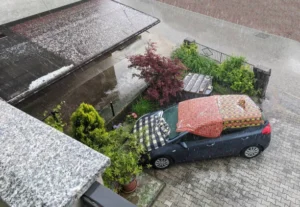When hurricanes barrel through Texas, the aftermath can leave homes battered, communities scrambling, and emotions running high. Powerful winds tear through neighborhoods. Torrential rain floods streets and homes. Roofs are ripped away, windows are shattered, and walls are soaked through. At TX Public Adjusting, we’ve seen it all firsthand. From torn-off roofs to flooded living rooms and collapsed foundations, every home/property damage after a hurricane tells a story—one of resilience, loss, and recovery.
Understanding the different types of hurricane property damage isn’t just helpful—it’s crucial. Knowing what to look for and how to react can make the difference between a smooth insurance claim and a drawn-out, stressful battle with your insurer. Protecting your family, preserving your investment, and positioning yourself for a full financial recovery starts with recognizing the signs of damage early.
Whether it’s roof damage, interior flooding, or structural cracks hidden beneath the surface, every issue needs swift documentation and professional evaluation. As public adjusters serving Houston and all of Texas, we’re here to help guide you through this overwhelming process.
Let’s walk through the most common types of property damage after a hurricane, what warning signs to watch for, and how to get your claim moving in the right direction—before small problems become major disasters.
1. Roof Damage
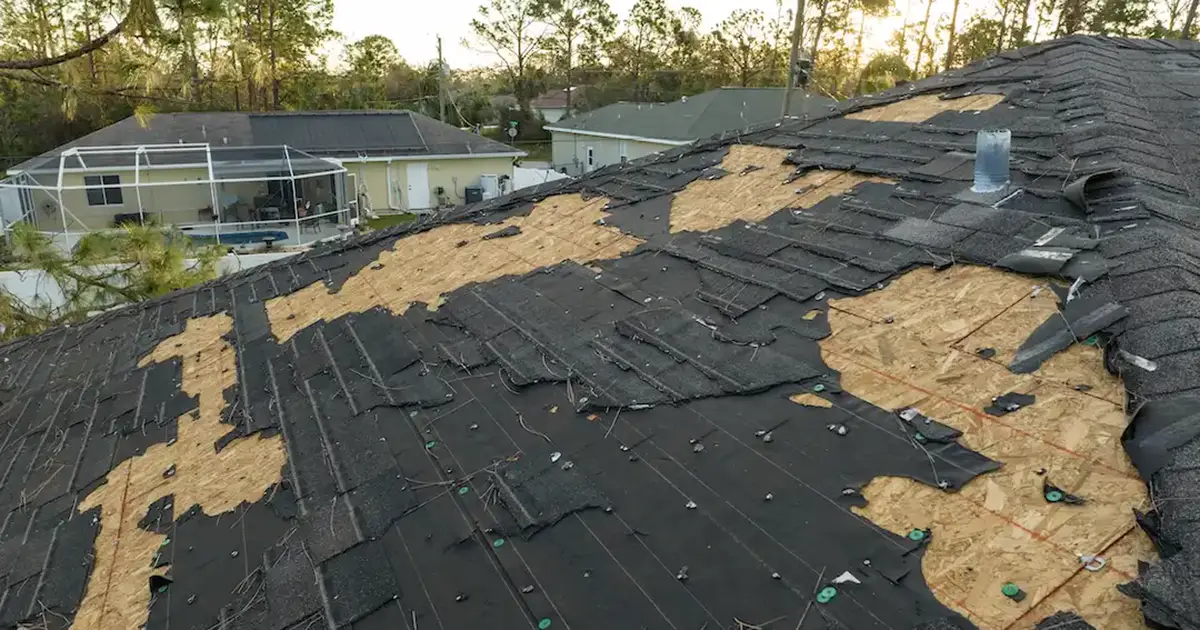
Your roof stands as the first and most critical barrier against hurricane chaos. When fierce wind gusts reach 100 to 156 mph—common in major Texas hurricanes—it’s usually the roof that gives way first. Shingles rip off. Tiles crack and fly. In severe cases, entire sections of the roof can be torn away, leaving your home completely exposed to the elements.
Even what looks like “minor” roof damage can spiral into a full-blown disaster. Missing shingles or damaged flashing allow rain to infiltrate quickly, leading to water intrusion that compromises ceilings, walls, and even electrical systems. For homes in Houston and throughout Texas, a damaged roof often triggers a chain reaction of problems that worsen rapidly without immediate intervention.
Policies providing greater coverage, such as Replacement Cost Value (RCV) policies, can sometimes offer a full roof replacement—but only if enough of the roof has been compromised. Be present when your insurance adjuster inspects your roof, and ensure they check multiple “test squares” to properly document the extent of damage.
Action tip: After the storm, take clear, detailed photos of your entire roof—not just the obvious damage. Even small losses today could snowball into massive hurricane home damage if left unaddressed. Quick action helps protect both your home and your insurance claim.
2. Interior Damage

Once the exterior armor of your house after a hurricane is breached—whether through a damaged roof, broken windows, or blown-out doors—your interiors are immediately vulnerable. Wind-driven rain seeps relentlessly into the structure, soaking walls, carpets, insulation, and flooring. Within hours, treasured belongings like electronics, furniture, documents, and clothing can be destroyed.
However, the real threat doesn’t stop there. Moisture left untreated becomes a breeding ground for mold—and mold can take hold shockingly fast, often within just 24 to 72 hours. Mold growth after hurricane damage to homes can not only worsen property damage but also pose serious health risks, from respiratory issues to allergic reactions. To make matters more complicated, most homeowners’ policies in Texas have strict limitations on mold coverage, making timely action even more critical.
Insurance carriers sometimes use delays in water remediation as grounds to deny or limit a claim. That’s why it’s vital to act immediately, even when professional remediation services are overwhelmed after a major storm event.
Action tip: Remove soaked materials like carpets, drywall, and furniture as quickly as possible, but document every step thoroughly. Take photographs of damaged areas, keep samples of ruined materials if safe to do so, and maintain records of any attempts to hire water remediation specialists. Proof of your quick response can be a game-changer when navigating hurricane property damage claims.
3. Structural and Foundation Damage
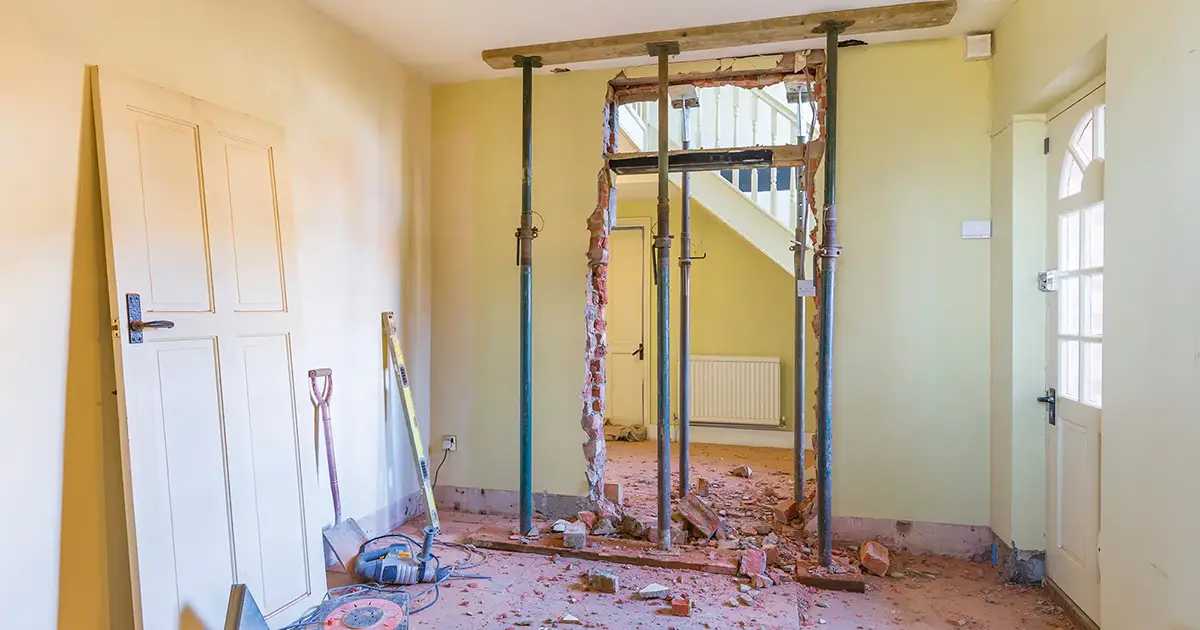
Hurricanes don’t just tear apart roofs and windows; they can shift the very ground beneath your home. When powerful winds combine with relentless floodwaters, the stress placed on a building’s structure can be immense. This dynamic force can lead to cracked foundations, destabilized support walls, compromised framing, and, in extreme cases, cause the entire building to shift off its original footing.
One of the most dangerous aspects of structural hurricane damage to houses is that it’s often not immediately obvious. From the curb, a hurricane-damaged home might appear intact, giving homeowners a false sense of security. But walk inside, and you might notice the telltale signs: uneven or slanted floors, cracks spreading along walls or ceilings, doors and windows that no longer open or close properly.
Leaving hidden structural issues unaddressed can lead to worsening damage over time, increased repair costs, and serious safety hazards for occupants. Immediate professional inspections are crucial for ensuring that your house after a hurricane remains safe to live in and qualifies for a comprehensive insurance claim.
Action tip: If you spot any cracks, shifting, or unusual door or window behavior, schedule a professional structural assessment right away. Catching hidden damage early could save you thousands and protect your family’s safety.
4. Flooding and Water Damage
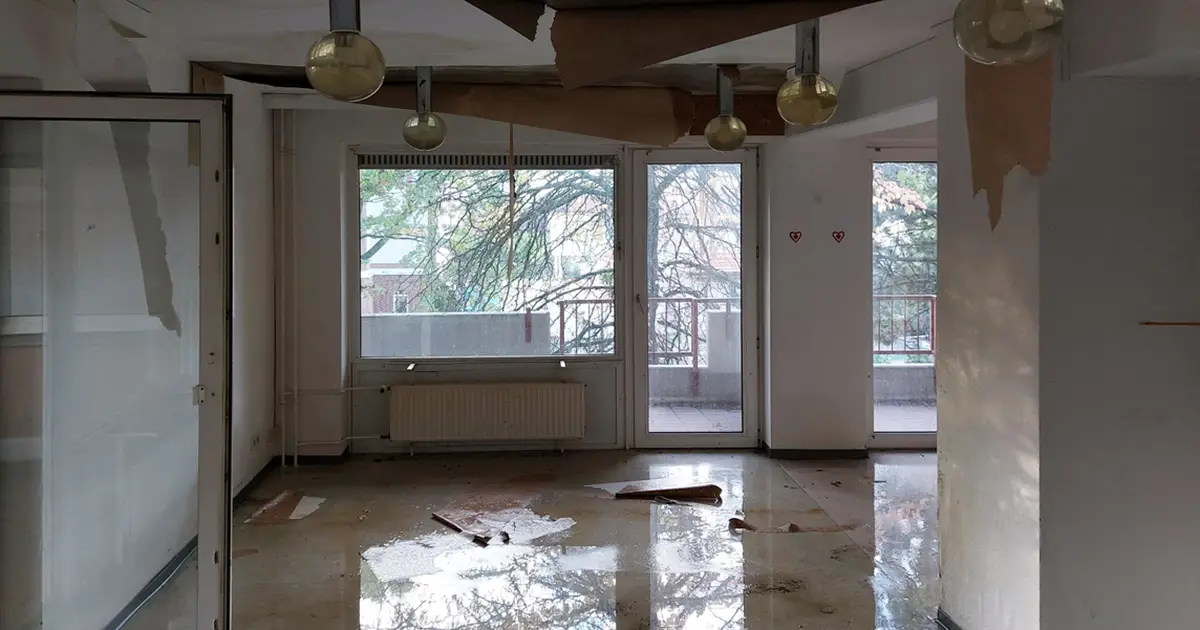
In Houston and throughout Texas, flooding remains one of the most devastating and insidious effects of hurricanes. When torrential rain and storm surges combine, floodwaters invade homes with alarming speed. But it’s not just the visible damage that matters. Floodwater seeps into drywall, insulation, baseboards, flooring, and electrical systems—contaminating nearly every material it touches.
Many homeowners make a costly mistake by assuming their standard homeowners’ insurance policy covers flooding. Unfortunately, flood damage is typically excluded from standard coverage and requires a separate flood insurance policy. This misunderstanding often leaves families financially vulnerable after hurricane damage to homes.
Another major issue is that contaminated floodwater can carry bacteria, sewage, and hazardous chemicals. Even after water recedes, lingering moisture can lead to mold growth within just 24 to 72 hours, amplifying the health risks and property destruction.
Action tip: Always treat floodwater as hazardous. As soon as it’s safe, document everything thoroughly—photograph the “high-water mark” on walls, damaged furniture, appliances, and any personal items touched by floodwater. Create a detailed inventory to support your insurance claim and consider consulting with remediation experts to assess hidden water damage early.
5. Equipment Damage
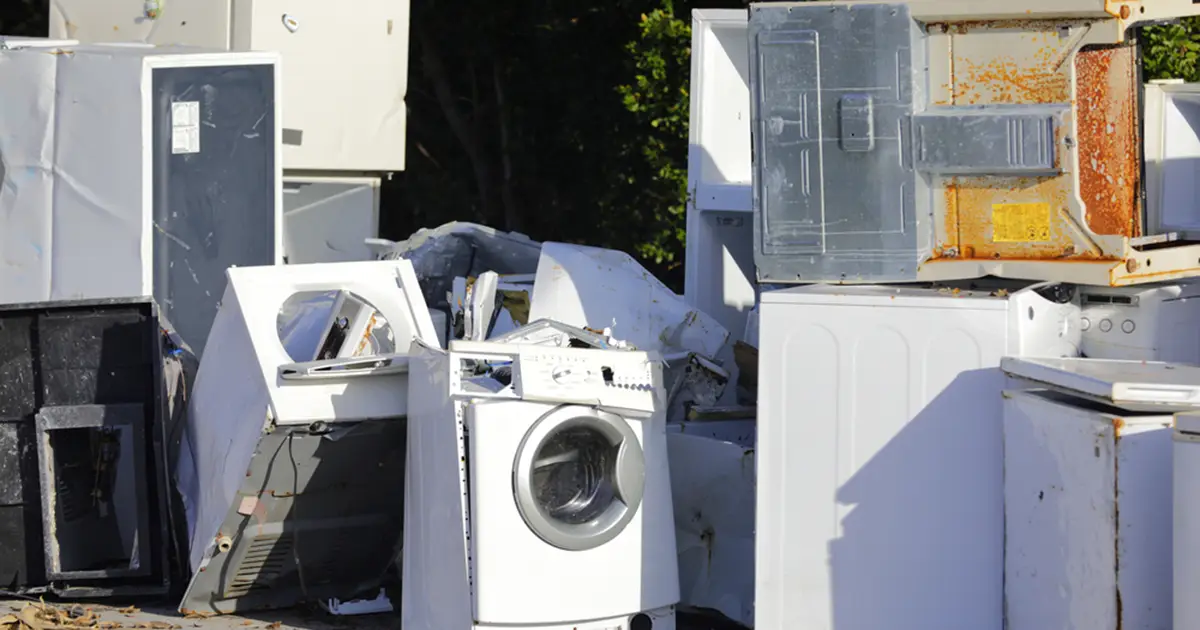
When hurricanes sweep through Texas, it’s not just visible structural elements that take a hit—your home’s critical systems are also at major risk. Air conditioning units, hot water heaters, pool pumps, and even complex home electronics can suffer extensive damage from both flooding and the power surges hurricanes often cause.
A major mistake many homeowners make is assuming that if an HVAC system or appliance turns on after the storm, it’s fine. Unfortunately, that’s not always the case. Latent water damage or electrical issues may cause these systems to fail months down the road, right when you need them most—especially during Texas’s brutal summer heat.
Additionally, damage to business-related equipment, such as electronic data processing units or fire-pressured vessels, can be particularly costly and difficult to replace without proper documentation. Most insurance policies require concrete evidence to validate a claim for equipment losses.
Action tip: Arrange third-party inspections for major home systems as soon as possible after hurricane property damage. Certified assessments from HVAC technicians, electricians, or specialists not only ensure your safety but also strengthen your insurance claim by providing expert validation of hidden or emerging damage.
6. Broken Windows and Doors
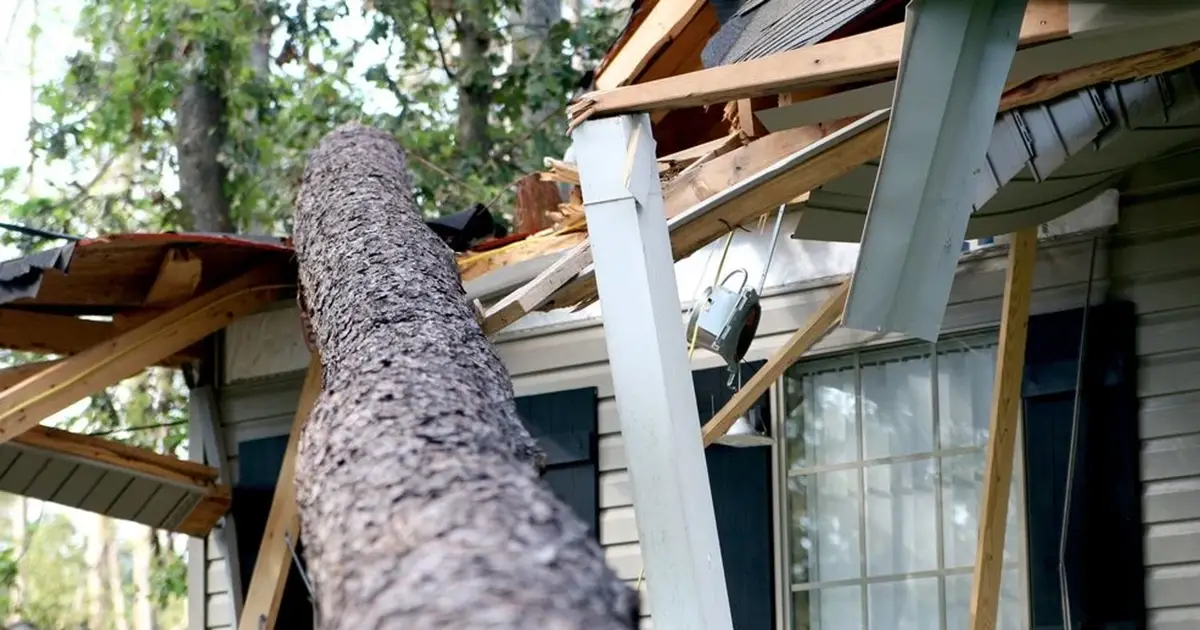
Flying debris is one of the most destructive and recognizable effects of a hurricane. During powerful storms, ordinary objects like patio furniture, trash bins, signage, and tree branches can become dangerous missiles, propelled at speeds over 100 mph. It doesn’t take much for these airborne hazards to smash through windows or tear doors from their frames.
Once windows are shattered or doors compromised, the damage multiplies fast. Rain, high winds, and even small debris funnel directly into the interior of your home, soaking floors, damaging walls, and ruining furniture and personal belongings. This breach leaves the house far more vulnerable to further hurricane property damage, mold growth, and even structural weakening over time.
In addition, broken windows and doors significantly increase safety hazards both during and after the storm, posing risks to anyone trying to shelter inside.
Action tip: Before a storm hits, install impact-resistant window coverings or hurricane shutters to shield your home. If damage occurs, board up broken windows and secure doors immediately after the storm passes to prevent additional losses and interior water intrusion—and make sure to document all visible damage thoroughly for your insurance claim.
7. Utility and Infrastructure Damage

Hurricane damage to houses goes far beyond broken roofs and flooded floors. When powerful storms sweep through Texas, they often devastate critical infrastructure too. Power lines snap like twigs. Internet and communication cables are torn apart. Water and sewer lines rupture under the pressure of flooding and debris. These losses can isolate entire neighborhoods for days or even weeks.
Extended outages are more than just an inconvenience—they can pose serious health risks. Without electricity, refrigeration, and clean water, a hurricane-damaged home can quickly become uninhabitable. Compromised sewer systems heighten the risk of contamination and disease, especially in areas already struggling with floodwaters. Restoring essential utilities often takes considerable time, further delaying recovery efforts for families and businesses.
Insurance claims for hurricane property damage can be impacted by these service interruptions, especially when they delay necessary repairs or remediation efforts. That’s why thorough documentation is essential.
Action tip: Keep a detailed log of all utility outages, including start and end times, and note how they affected your living conditions. If evacuation orders were issued or prolonged outages made your home unsafe, record this information—it could be vital for strengthening your insurance claim and receiving full compensation.
8. Landscaping and Tree Damage
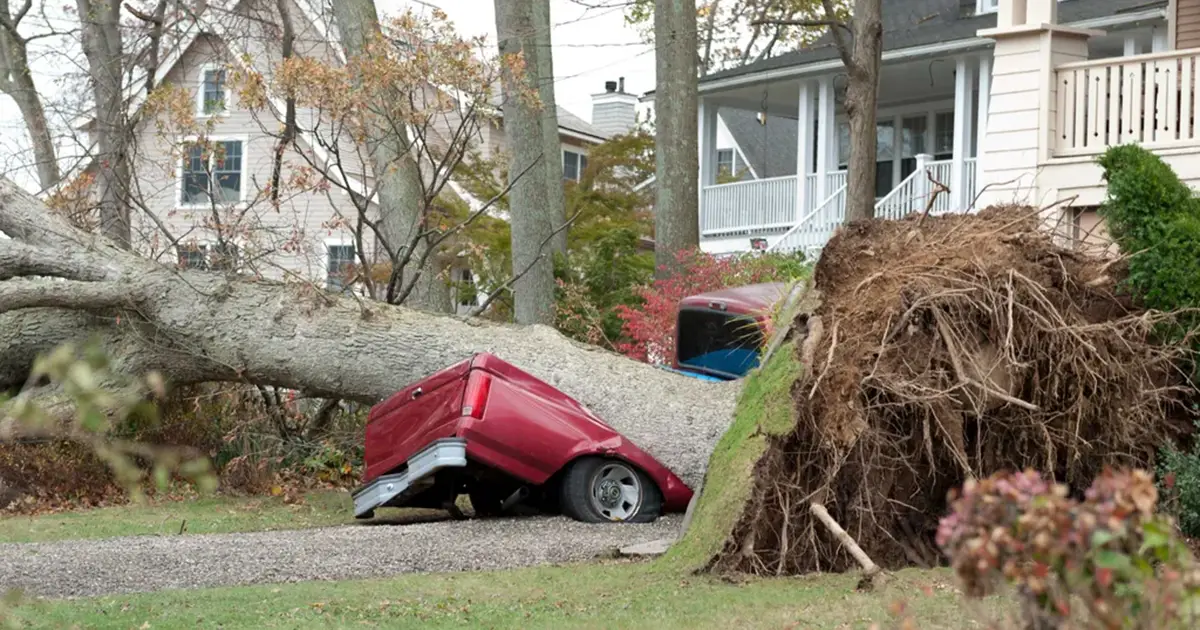
In the wake of a hurricane in Houston or anywhere across Texas, the landscape often looks unrecognizable. Trees that once lined streets or shaded backyards are ripped from the ground, their massive roots exposed. Branches snap and fly like spears, crashing into fences, rooftops, and vehicles. Shrubs and garden structures are often flattened, leaving once-beautiful yards in complete disarray.
The damage trees cause doesn’t end with a toppled trunk. Uprooted trees can puncture roofs, collapse garages, and crush outdoor living spaces. Heavy roots can even disturb underground utility lines or crack foundation slabs, adding to the extensive list of hurricane home damage issues.
Insurance companies may be quick to downplay landscaping loss unless it causes structural damage to your property. That’s why it’s crucial to document not only the trees themselves but also the chain reaction of destruction they caused.
Action tip: Immediately after the storm, take wide-angle and close-up photos of fallen trees in relation to your home, driveway, or fences. Include shots showing damage to structures. Thorough documentation strengthens your hurricane property damage claim and makes it harder for insurers to argue the extent of the loss.
9. Impact Damage from Debris
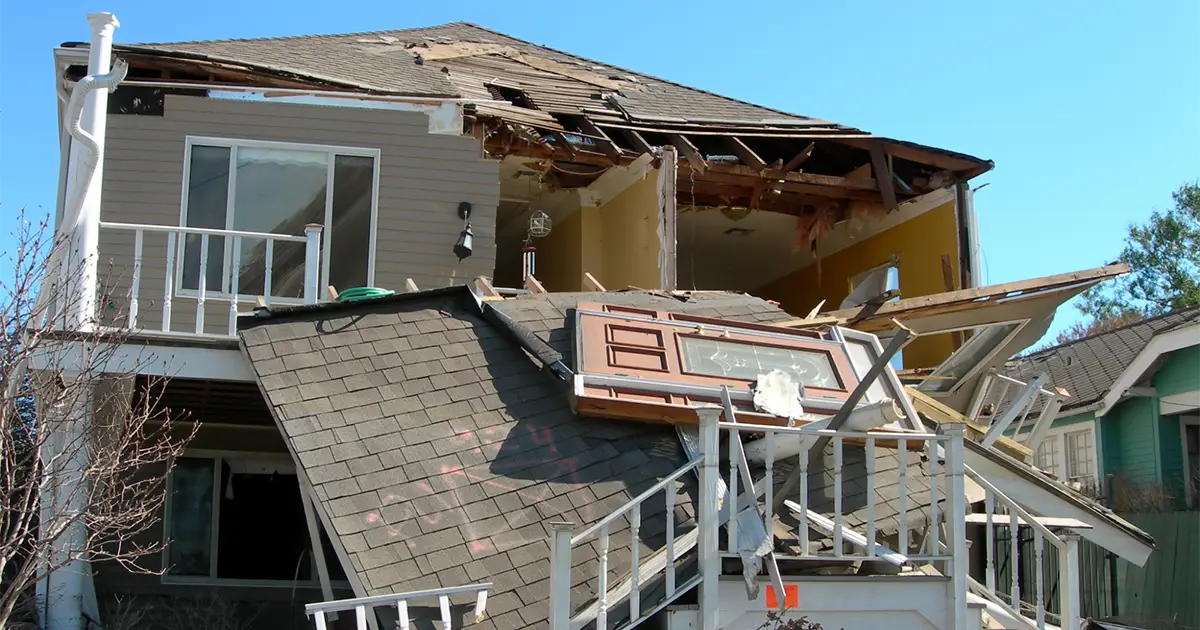
After a hurricane sweeps through, houses often resemble battle zones more than homes. Ordinary objects become dangerous projectiles when driven by hurricane-force winds. Lawn chairs, trash cans, tree limbs, signage, and even roofing tiles from neighboring properties can smash into walls, shatter windows, and punch holes through siding or roofs.
Debris impact damage is unpredictable and devastating. It doesn’t matter how strong your house was built—at 100+ mph, even small objects can inflict serious destruction. What makes debris damage particularly complicated is how widespread and varied it can be, making repairs expensive and insurance claims challenging.
In many cases, impact damage sets off secondary issues like water intrusion, structural weakening, and interior flooding. Unfortunately, if debris damage isn’t well-documented, insurance adjusters may downplay its role in the overall hurricane property damage.
Action tip: If it’s safe to do so, save the debris responsible for major damage. Take clear photographs showing where and how the debris struck your home. Wide shots and close-ups help build a compelling case when filing your insurance claim. Proper documentation ensures you’re not left paying out of pocket for these unexpected but very real hurricane home damage expenses.
10. Fire and Electrical Damage
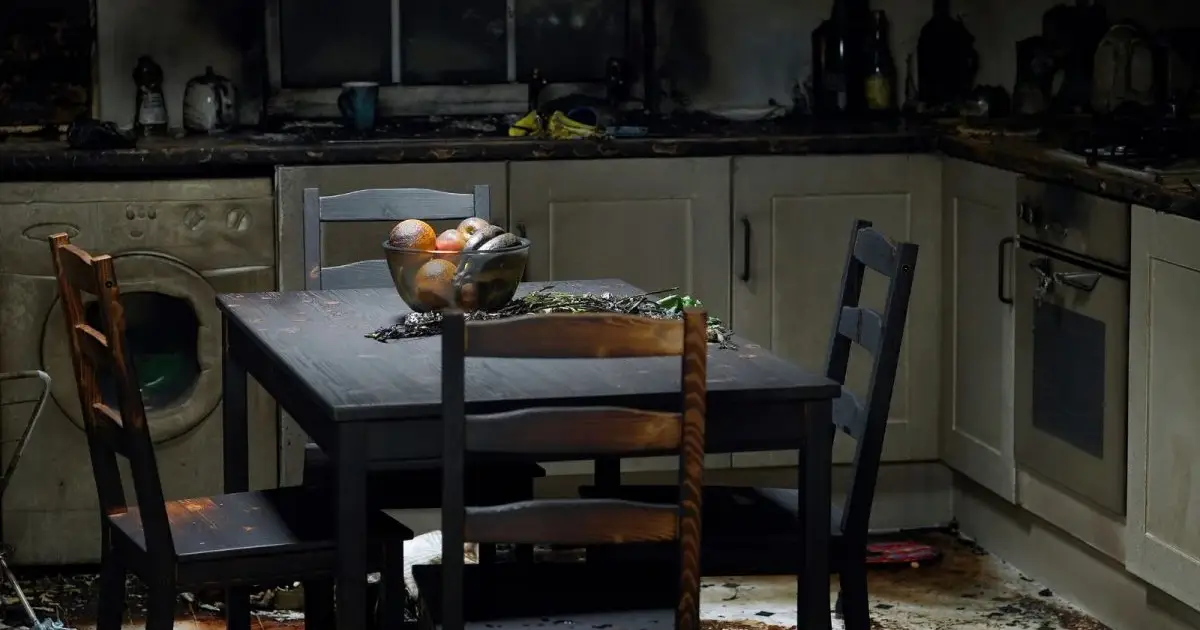
It might sound counterintuitive—but fire is a very real and dangerous risk during and after a hurricane. In Texas, downed power lines igniting dry debris are a common cause of post-storm fires. Lightning strikes can fry transformers, sparking blazes that spread quickly through neighborhoods already vulnerable from storm damage. Water intrusion further complicates things by infiltrating electrical panels, outlets, and circuits, causing short circuits that can ignite fires days or even weeks later.
Even if your house appears to have survived the storm physically intact, hidden electrical damage could be lurking behind walls or inside appliances. Compromised systems can make a hurricane-damaged home unsafe long after the winds have died down.
Fire damage resulting from hurricane house damage also adds layers of complexity to insurance claims, as it involves both fire and water-related perils. Having thorough documentation and expert evaluations is crucial to ensure you receive the full coverage you’re entitled to.
Action tip: Always have a licensed electrician inspect your home’s electrical systems immediately after the storm passes. Catching hidden dangers early can prevent devastating fires and support stronger, more comprehensive hurricane property damage claims.
Why Fast Action Matters
When the winds finally die down and the skies clear, the clock immediately starts ticking. Every hour after a hurricane passes is critical. Insurance companies meticulously scrutinize how quickly you respond to storm damage. The longer you wait to tarp a torn roof, dry out flooded interiors, or document destruction, the easier it becomes for insurers to argue that further losses were due to negligence rather than the storm itself.
Delays can cost you—big time. Water damage can worsen by the hour, mold can begin growing within days, and minor roof damage can evolve into major structural failures if left unattended. Adjusters often look for any reason to deny, delay, or minimize claims related to hurricane property damage, hurricane home damage, and storm damage to houses.
At TX Public Adjusting, we help Texans act fast and smart. We know the policies. We know the loopholes. And we know exactly how insurance companies operate after hurricane damage to homes. Our team is dedicated to protecting your rights, maximizing your settlement, and making sure you don’t leave a single dollar on the table.
Fast action isn’t just smart—it’s essential. Let us guide you every step of the way.
Filing Your Hurricane Damage Claim: 5 Essential Steps
Filing a hurricane damage claim is not just about reporting the loss—it’s about building a strong, undeniable case. Every step you take matters, especially when dealing with hurricane property damage in Texas. Here’s how to protect your rights and maximize your settlement:
- Document everything: Take comprehensive photos and videos of every area affected, from your roof to your foundation. Save receipts for emergency repairs. Create a “hurricane folder” on your phone, computer, and in print—you can never have too much documentation.
- Get expert assessments: Don’t rely solely on the insurance company’s adjuster. Hire independent experts like roofers, electricians, and contractors to evaluate the full extent of your hurricane damage house claim. Their reports carry serious weight during negotiations.
- Prevent further damage: Insurers expect homeowners to mitigate additional losses. Tarp broken roofs, board up shattered windows, and shut off utilities if safe to do so. Showing proactive measures can strengthen your claim.
- Understand your policy: Know what your policy covers—especially whether you have flood insurance or separate windstorm coverage. Gaps in coverage can significantly impact your payout.
- Hire a public adjuster: Working with experienced advocates like TX Public Adjusting levels the playing field against big insurers. We fight to get you every dollar you deserve for your hurricane home damage.
FAQs About Types of Property Damage After a Hurricane
High winds can rip off shingles, damage roof sheathing, or tear away entire sections. Even minor roof damage can lead to major water intrusion if not quickly addressed.
Mold can begin to grow within 24 to 72 hours if water is not removed and materials are not properly dried.
Yes. Cracked foundations, uneven floors, and sticking doors may indicate serious structural issues not visible from the exterior.
No. Flood damage usually requires a separate flood insurance policy beyond a standard homeowners insurance plan.
HVAC units, hot water heaters, pool pumps, electrical systems, and electronics are highly vulnerable to water exposure and power surges.
They allow rain, wind, and debris to enter the home, causing accelerated interior damage and increasing safety risks.
Uprooted trees and broken branches can puncture roofs, collapse garages, and even crack foundations.
Impact damage occurs when flying objects like tree limbs, signs, or roofing materials crash into a house, causing holes, cracks, and broken windows.
Yes. Downed power lines, lightning strikes, and water infiltration can lead to electrical shorts and fires even after the storm has passed.
Insurance companies scrutinize delays. Quickly documenting damage, mitigating further loss, and hiring experts strengthens your claim and prevents coverage disputes.
Final Thoughts
No matter how prepared you are, facing hurricane house damage can feel overwhelming, exhausting, and sometimes downright unfair. The truth is, you’re not alone. From Houston neighborhoods to small towns across Texas, thousands of homeowners each year find themselves grappling with the daunting aftermath of hurricane property damage.
The good news? You don’t have to navigate it alone. At TX Public Adjusting, we stand with you every step of the way—from the first inspection, to documenting every loss, to negotiating fiercely for a full and fair settlement. Insurance companies are quick to find ways to minimize payouts, hoping homeowners make mistakes or miss crucial deadlines. That’s why having a dedicated advocate can make all the difference between being shortchanged and receiving the funds you need to rebuild stronger.
Our mission is simple: protect Texas homeowners, fight for their rights, and make sure they claim every dollar they’re owed under their policies.
Need help with your hurricane damage claim? Contact TX Public Adjusting today. Take the first step toward rebuilding your home—and your peace of mind—with a team that knows how to get results.



